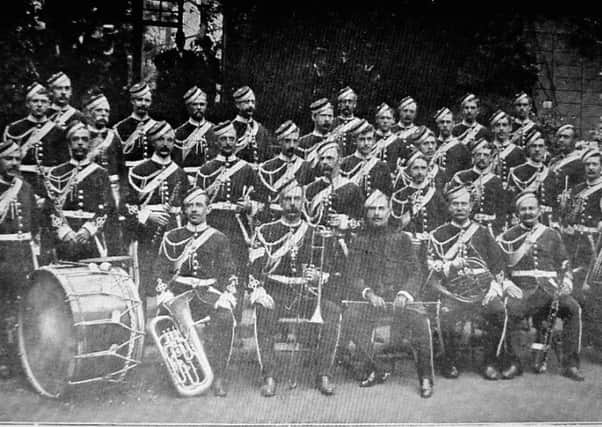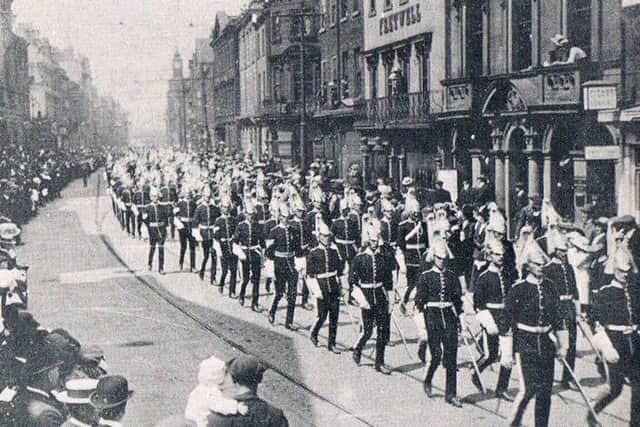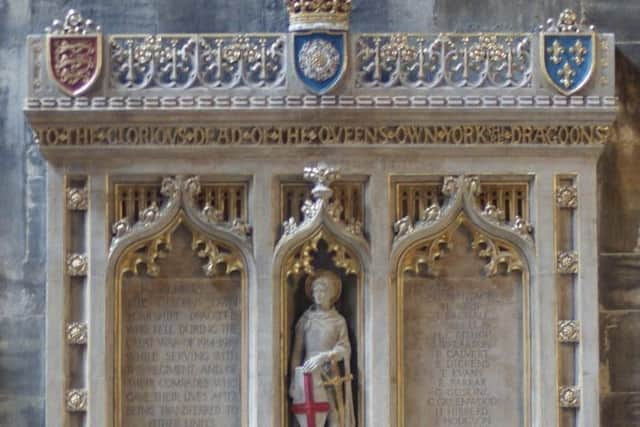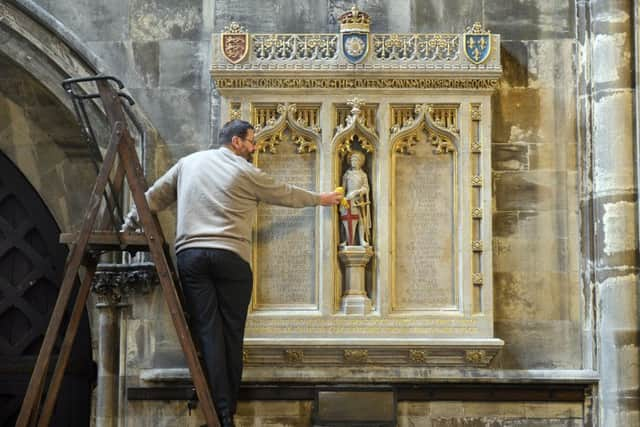Look back at history of Queens Own Yorkshire Dragoons in Doncaster


In early 2017 the Doncaster and District Heritage Association was awarded a grant by the Heritage Lottery Fund to carry out restoration and research work to a memorial situated in Doncaster Minster.
The memorial is a tribute to the men of the Queens Own Yorkshire Dragoons that gave their lives in WW1 and research on the regiment, that is now almost complete, has brought to light a rich and fascinating historical connection between the Dragoons and Doncaster.


Advertisement
Hide AdAdvertisement
Hide AdThe association between the town and the Regiment that eventually became the QOYD began more than 220 years ago, making it probably the oldest military unit connected to the town.
In early 1794 the then Prime Minister, William Pitt, requested that Lord Lieutenants and principal land owners from all over the country form volunteer units that would provide defence in the event of invasion.
Doncaster at this time was establishing itself as a social centre for the nobility and gentry and, as a consequence, the Lord Lieutenant of West Yorkshire, the Duke of Norfolk, together with Earl Fitzwilliam and other notable gentlemen such as Bryan Cook of Owston Hall, met with the result that a Corps of Cavalry was formed. The volunteers, almost 500 in number, were all substantial land owners or sons of such householders whether farmers, manufacturers or tradesmen.
A public subscription fund was established to provide funds to equip the newly named West Riding Yeomanry and Doncaster Corporation led the way with a donation of 500 guineas (£525).


Advertisement
Hide AdAdvertisement
Hide AdThe Corps was divided into two regiments each composed of five troops of 50 men and the 1st, or Southern Regiment based in Doncaster, was commanded by Bryan Cooke who was given the rank of Lieutenant Colonel.
The Doncaster Troop first paraded in full uniform in August 1794 and the whole regiment paraded in front of the Mansion House on October 8 1794.
After this parade it is recorded that the whole Regiment dined with the Mayor and Corporation at the Mansion House, an event described by commentators at the time as a “somewhat brilliant affair”.
Over the next six years regular church parades and annual training assemblies took place in Doncaster and it is reported that the annual dinners at the Mansion House became a feature that everyone looked forward to.


Advertisement
Hide AdAdvertisement
Hide AdThe threat of invasion ended in 1802 and the entire Corps of Cavalry was disbanded. However a short time later in 1803 the Southern Regiment of Yeomanry was quickly re-formed when hostilities between Britain and Napoleon Bonaparte commenced.
A meeting chaired by Earl Fitzwilliam was held in the old Town Hall in the Market place to raise funds and recruit volunteers. As with the previous appeal for funds in 1794 Doncaster Corporation made a generous donation. The Southern Regiment soon became the largest Yeomanry Regiment in Yorkshire with a strength of more than 600 men and officers. Annual training took place over the following five years in the town and in 1808 the Regiment, now under the command of Colonel Foljambe took part in a Grand Review held on Town Moor in the presence of HRH the Prince of Wales, later to become George IV.
During this time and the following seven years the Regiment trained regularly and maintained readiness should an invasion take place, and when Napoleon was defeated in 1815 the Southern Regiment survived disbandment that other militia units had suffered.
The Government reduced the its support funding, with the result that over the following years of the 19th century a much greater financial burden fell on the commanding officers. Lord Wharncliffe succeeded Colonel Foljambe in 1810 and remained in post until 1845 when Viscount Milton, the grandson of the original Commander Earl Fitzwilliam, became Colonel Commandant. Both ensured that enough funds were available to enable the Doncaster Troop to assemble in the town once a month for training and church parades and, in the middle of each year, the whole Regiment assembled on Town Moor for annual training – an event described by commentators at the time as a spectacle that rivalled any race meeting or civic event. The Mansion House was used as the Officers’ Mess and the men were billeted at local inns. Each evening the people of the town were entertained by concerts performed by the Regimental band.